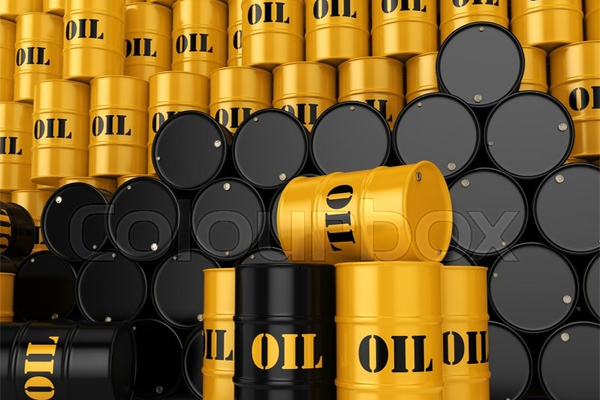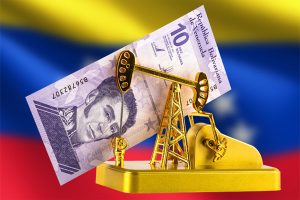
By Myra Saefong and Williams Watts/MarketWatch
SAN FRANCISCO
EnergiesNety.com 01 10 2022
Oil futures edged lower Monday, as traders weighed supply disruptions in Kazakhstan and Libya against the threat to energy demand posed by the omicron variant of the coronavirus.
Oil held up much better than other risk assets Monday as “supply concerns continue to linger after production and pipeline outages overseas buoyed prices last week,” Tyler Richey, co-editor at Sevens Report Research, told MarketWatch.
“As far as the geopolitical tensions go, the various conflicts and threats across eastern Europe and the Middle East will remain supportive for energy in the near term,” he said. However, “it already appears that some of the supply and production disruptions are being sorted out, so that could result in a ‘sell the news’ reaction from markets in the sessions ahead, pending any new developments.”
Oil supply took a hit last week on the back of protests in Kazakhstan, while Libya has seen declines in oil output due to pipeline maintenance, weeks after militias first shut down major oil fields.
Around 300,000 barrels per day of oil production remained shut in as a blockage at Libya’s key western oil fields remained in place, sources told S&P Global Platts on Monday, but the country’s output has recovered to around 900,000 barrels per day after pipeline maintenance at the eastern Waha oil fields was completed.
Near term, Richey at Sevens Report Research said he expects U.S. benchmark oil prices to see some consolidation back toward $75 a barrel “as recent gains are digested,” however a deeper correction is “possible if the fundamental outlook continues to deteriorate.”
West Texas Intermediate crude for February delivery CL00, 0.52% CLG22, 0.54% fell 67 cents, or nearly 0.9%, to settle at $78.23 a barrel on the New York Mercantile Exchange, after posting a loss on Friday. March Brent crude BRN00, +0.16% BRNH22, +0.16%, the global benchmark, declined by 88 cents, or 1.1%, at $80.87 a barrel on ICE Futures Europe. Last week, WTI, the U.S. benchmark, rose 4.9%, while Brent advanced more than 5%.
Worries about COVID’s impact on demand continued to pressure oil. Chinese authorities in the northern coastal city of Tianjin, after the detection of two cases of COVID-19 caused by the omicron variant of the coronavirus, ordered the testing of millions of people weeks ahead of the start of the Winter Olympics in nearby Beijing. China has been sticking to a “zero-COVID policy” entailing strict lockdowns and mass testing in response to outbreaks.
Read: Failed China ‘zero-COVID’ policy tops list of 2022 geopolitical risks: Eurasia Group
“While we see other countries adapting to live with COVID, China clearly continues to pursue its zero-COVID policy,” said Warren Patterson, head of commodities strategy at ING, in a note. “This is a risk to oil demand since China is the largest crude oil importer in the world. We are also approaching Chinese New Year, a time when there is normally plenty of domestic travel, and so any domestic restrictions will weigh on oil consumption.”
But supply concerns may remain a bigger factor, he said, given unrest in Kazakhstan and output outages in Libya.
Chevron said the Tengizchevroil consortium it leads is gradually restoring production at Kazakhstan’s Tengiz oil field after civil unrest led to a reduction in output by an unspecified amount last week, according to news reports.
The country produces about 2.1% of global oil production and any impact to output could be short lived, said Rohan Reddy, analyst at global exchange-traded funds provider Global X. Even if there is a prolonged impact, other countries like the U.S., could “step in to fill the void left by lost Kazakh production.”
Meanwhile, U.S. and Russian negotiators held talks in Geneva Monday amid Moscow’s military buildup near Ukraine, but Deputy U.S. Secretary of State Wendy Sherman referred to the event as a “discussion,” and “not what you call a negotiation,” according to the The Wall Street Journal. Further meetings are expected to be held in Brussels and Vienna later this week.
In other Nymex dealings, February gasoline RBG22, 0.33% shed 1% to $2.275 a gallon, while February heating oil HOG22, 0.27% tacked on 0.2% to $2.488 a gallon.
February natural gas NGG22, 1.25% settled at $4.079 per million British thermal units, up 4.2%.
Colder weather forecasts boosted heating demand expectations for mid-to-late January, said Christin Redmond, commodity analyst at Schneider Electric, in a Monday note.
By Myra Saefong and Williams Watts from MarketWatch
marketwatch.com 01 10 2022








